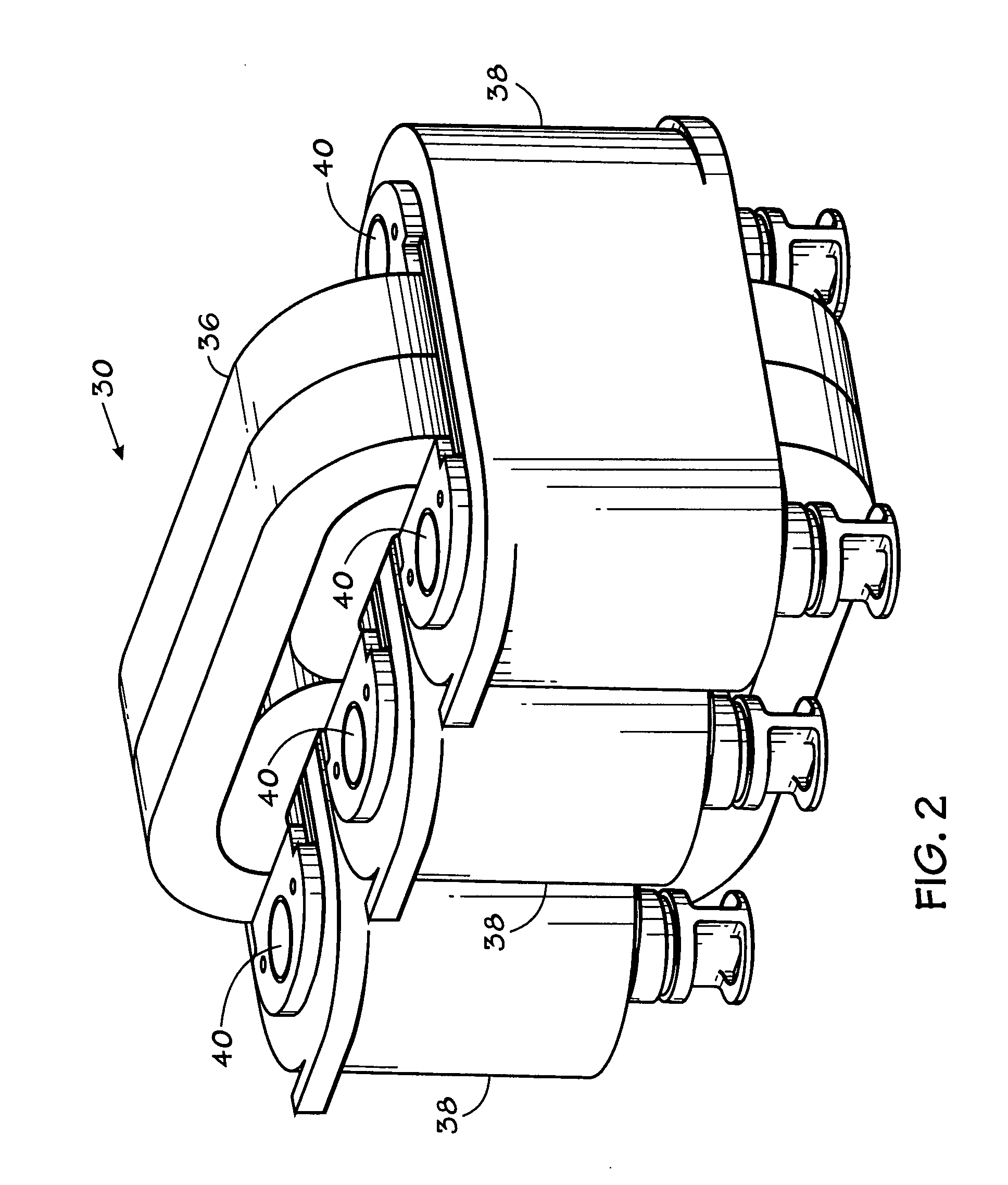Electric coil and core cooling method and apparatus
a technology of electric coils and cores, applied in the direction of magnets, inductances, magnetic bodies, etc., can solve the problems of reducing the thermal resistance at the interfaces of components, and achieve the effect of improving cooling and heat distribution in power modules
- Summary
- Abstract
- Description
- Claims
- Application Information
AI Technical Summary
Benefits of technology
Problems solved by technology
Method used
Image
Examples
Embodiment Construction
[0016]Various electronic circuits benefit from the use of inductors. Although inductors are useful for filtering, smoothing or otherwise conditioning power signals, inductors, including reactors, chokes, transformers, and the like, generally produce heat due to core and coil losses. Heat may degrade the performance of the inductor, or may cause degradation and premature failure of the device. Accordingly, the following embodiments provide a system and method to remove thermal energy from the core and the coils of an inductor. In certain embodiments, a cooling element is disposed adjacent to a core, such as between the core and the coil of an inductor such that it may absorb the heat generated by the inductor. In a presently contemplated embodiment, the core includes multiple core pieces that are urged outward by a biasing element disposed between the core pieces. Urging the core pieces outward promotes contact between the core pieces and a cooling element located proximate to the co...
PUM
| Property | Measurement | Unit |
|---|---|---|
| conductive | aaaaa | aaaaa |
| resilient | aaaaa | aaaaa |
| coefficient of thermal expansion | aaaaa | aaaaa |
Abstract
Description
Claims
Application Information
 Login to View More
Login to View More - R&D
- Intellectual Property
- Life Sciences
- Materials
- Tech Scout
- Unparalleled Data Quality
- Higher Quality Content
- 60% Fewer Hallucinations
Browse by: Latest US Patents, China's latest patents, Technical Efficacy Thesaurus, Application Domain, Technology Topic, Popular Technical Reports.
© 2025 PatSnap. All rights reserved.Legal|Privacy policy|Modern Slavery Act Transparency Statement|Sitemap|About US| Contact US: help@patsnap.com



